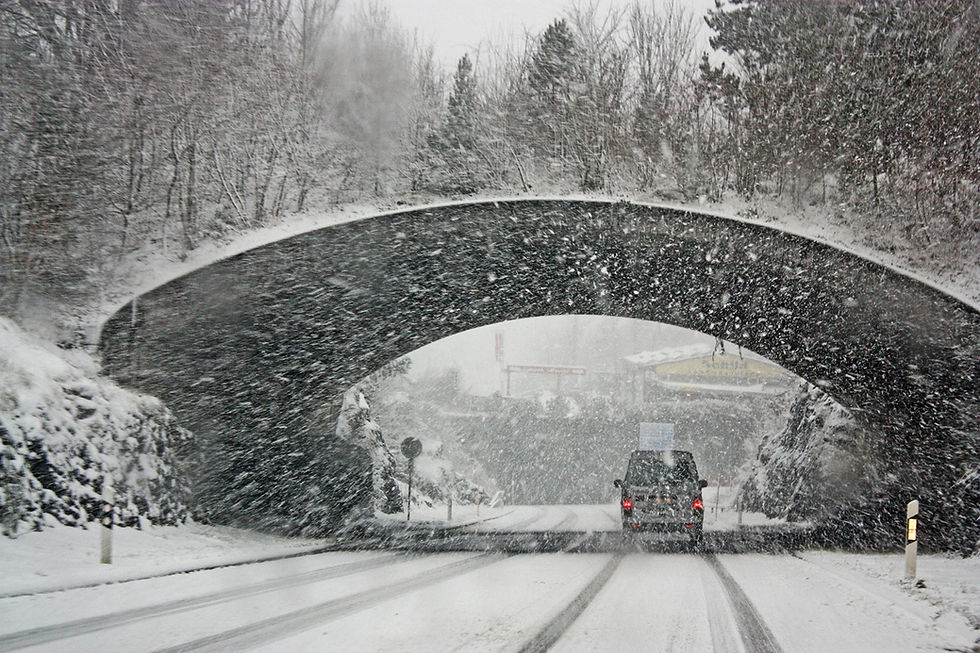The Hidden Risks of Aftermarket Customizations: What Drivers Should Know
- Sonny Dinler
- May 12
- 3 min read

Aftermarket customizations let drivers tailor their vehicles to reflect personal style, improve performance, or stand out on the road. For models like the Jeep Wrangler, Ford Bronco, or Dodge Challenger, customization is part of the culture—lift kits for Wranglers, LED light bars for Broncos, or performance exhausts for Challengers are just a few examples that make these vehicles personal and bold. Drivers often explore modifications like lifted suspensions, oversized tires, upgraded lighting, custom bumpers, and performance chips to make their rides truly their own. However, some modifications, while stylish or fun, may compromise safety in ways that aren't immediately obvious.
How Modifications Can Impact Vehicle Safety
Common Safety Disruptions
When a vehicle rolls off the production line, every part has been engineered, tested, and approved to meet safety standards. Changing that balance with aftermarket parts may throw off key systems such as suspension, braking, or even stability control. For example, installing larger tires or a lift kit can raise the vehicle’s center of gravity, increasing the risk of rollover during sharp turns or emergency maneuvers.
Other common changes—like altering headlights or taillights, replacing bumpers, or installing performance exhausts—can unintentionally reduce visibility or interfere with crumple zones. These mods may also generate more heat than the vehicle was designed to manage, leading to added strain on the engine or surrounding components. Even seemingly harmless upgrades like dark window tinting can limit visibility, especially during nighttime driving or poor weather conditions, increasing the risk of an accident.
Real-World Example: Jeep Wrangler Rollovers
In 2017, the Insurance Institute for Highway Safety (IIHS) raised concerns about aftermarket lift kits and oversized tires installed on Jeep Wranglers. Testing revealed that certain customized models were more likely to tip during crash-avoidance maneuvers. While Wranglers meet rollover standards in factory condition, the added height and changes to suspension geometry caused instability during testing. This illustrates how popular mods can unintentionally compromise a vehicle’s designed safety performance.
The Legal and Insurance Implications
What the Law and Your Policy Might Say
Many drivers don’t realize that some modifications can affect insurance coverage or even violate local laws. States may have restrictions on lift heights, bumper height, or allowable lighting setups. In some cases, failing to disclose modifications to an insurance provider can result in denied claims if the changes contributed to an accident.
Insurers also evaluate risk based on the original vehicle configuration. For example, a suspension lift that isn't disclosed could result in a denied claim if it’s found to have contributed to a collision. Changes to horsepower, braking systems, or chassis components can raise red flags and lead to premium increases or coverage exclusions. For anyone considering modifications, it’s wise to review local vehicle regulations and insurance policy terms ahead of time to avoid complications later.
Performance Mods Can Have Unintended Consequences
Many aftermarket parts promise enhanced horsepower, torque, or off-road ability. However, modifying one system often places strain on others. A cold-air intake or turbo boost might increase engine output, but without corresponding upgrades to the transmission, brakes, or cooling system—each of which absorbs the added strain—performance can suffer and safety risks may increase.
Likewise, tuning software and performance chips may override factory settings in ways that affect emissions compliance or cause long-term wear. These adjustments may not trigger immediate issues, but over time, they can shorten the life of vital systems and increase the risk of failure.
What to Keep in Mind Before Customizing
Before customizing, weigh the performance benefits against potential handling issues, safety concerns, and legal complications. Drivers should:
Research how a mod may affect their vehicle’s handling, stability, and braking
Check whether upgrades comply with state vehicle codes and inspection rules
Confirm that any aftermarket parts are certified and professionally installed
Talk with a trusted mechanic about how changes may impact long-term reliability
A post-installation inspection by a professional can uncover hidden issues early, ensuring the vehicle remains safe and performs as expected.
Come Down to Sonny’s Auto Repairs
Thinking about upgrading your vehicle or already have aftermarket parts installed? Let’s make sure everything is safe and road-ready. Call us at 516-822-3671 or use the contact form on our website to book an inspection. A few extra steps now can prevent major problems down the road and help keep you, your passengers, and others safe.



Comments